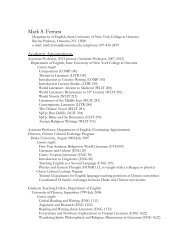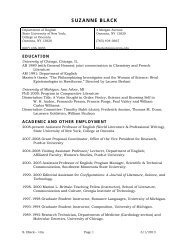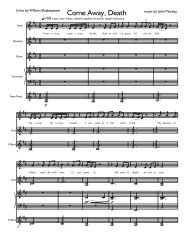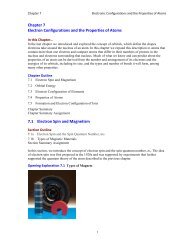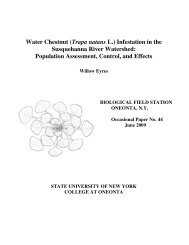quantitative analyses of periphyton biomass and ... - SUNY Oneonta
quantitative analyses of periphyton biomass and ... - SUNY Oneonta
quantitative analyses of periphyton biomass and ... - SUNY Oneonta
You also want an ePaper? Increase the reach of your titles
YUMPU automatically turns print PDFs into web optimized ePapers that Google loves.
Streams 16, 17, 20, <strong>and</strong> 6 were characterized as agricultural streams.<br />
Based on the indices, higher values indicate more agricultural l<strong>and</strong> <strong>and</strong><br />
generally higher nutrient concentrations.<br />
Streams 15, 5, 9, <strong>and</strong> 4 were characterized as forested streams based<br />
on the trophic level indices (Figure 7). The lower values indicate more forested<br />
l<strong>and</strong> than agricultural <strong>and</strong> generally lower nutrient concentrations.<br />
Stream 2 was characterized as urban because it flowed through the<br />
Village <strong>of</strong> Cooperstown. Of the ten sampling sites, the highest yearly average<br />
concentrations <strong>of</strong> T.P0 4 (.334 mg/l) <strong>and</strong> CI (33.42 mg/I) were recorded for this<br />
stream, which is typical <strong>of</strong> urban streams (Wetzel 1983).<br />
Affects <strong>of</strong> the Parameters on Periphyton Biomass<br />
The 'first two objectives <strong>of</strong> this study were to determine (1) if streams<br />
flowing through agricultural areas have higher nutrient concentrations than<br />
streams flowing through forested areas <strong>and</strong> (2) if streams with high<br />
concentrations <strong>of</strong> nutrients supported high <strong>periphyton</strong> <strong>biomass</strong>.<br />
Streams 16, 17, <strong>and</strong> 20, located in the Northern section <strong>of</strong> the Otsego<br />
Lake Watershed, flow mostly through agricultural l<strong>and</strong>. The reduced amount <strong>of</strong><br />
vegetated areas between the fields <strong>and</strong> stream banks allow more nutrients from<br />
run<strong>of</strong>f to enter the stream <strong>and</strong> incident light to reach the stream which<br />
provides energy for photosynthesis <strong>and</strong> warms the water. This situation<br />
provides an ideal environment for <strong>periphyton</strong> growth. Figure 9 shows the<br />
monthly averages <strong>of</strong> T-P0 4 <strong>and</strong> N0 3 concentrations during the collection year<br />
in the agricultural streams. Appendix F lists the monthly average values. The<br />
43



